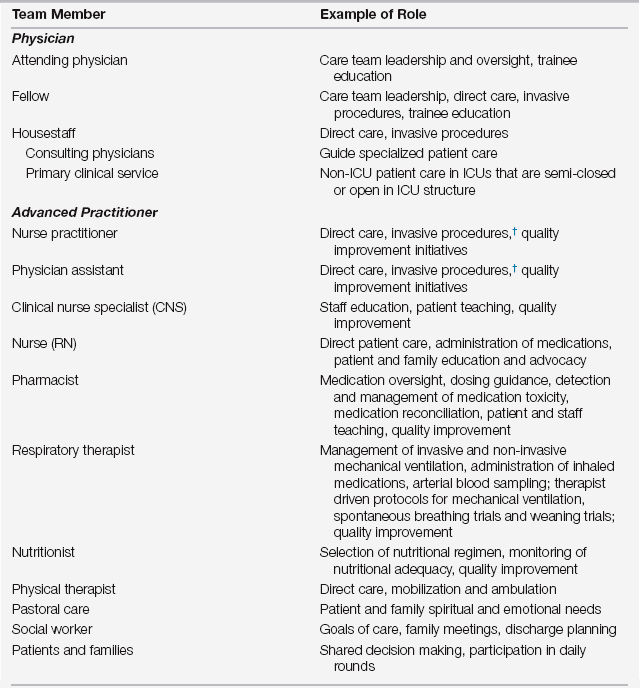Chapter 103
Teamwork and Collaborative Practice in the Intensive Care Unit 
What Are the Benefits of Collaborative Practice in the ICU?
Collaborative practice promotes patient safety and optimal outcomes by encouraging shared responsibility for patient care and harnessing the expertise of each discipline involved. When all members of the ICU team (Table 103.1) take an active role in patient care, care goals are achieved faster and more efficiently and both patient and provider satisfaction are improved. The use of ventilator weaning protocols offers an illustration of the benefits of collaborative practice. In settings where a physician order is required to make any ventilator adjustment, ventilator weaning goals are accomplished more slowly than if respiratory therapists are empowered to make changes according to a protocol.
TABLE 103.1
Intensive Care Unit Multi-disciplinary Team Members∗

∗Additional care team members include occupational therapists and palliative care consultants.
†State laws vary on nurse practitioner and physician assistant scope of practice and procedure reimbursement.
Secondly, patient safety and coordination of care improve with collaborative practice. Shared care plans and goals of care for patients serve as protection against adverse events such as medication errors, wrong-sided procedures, and resuscitations that patients or families have declined. Many ICUs use checklists to facilitate the formation and communication of care plans. Checklists have been shown to decrease unnecessary variability in care and promote evidence-based practice. An example of a checklist used during interdisciplinary rounds is shown in Figure 103.1.
An additional benefit to collaborative practice is improved team member satisfaction. The ICU is a high-acuity environment in which practitioners are subject to variable degrees of stress and frustration. Collaborative practice and shared ownership of patient care may diffuse some of the anxiety related to caring for the critically ill, contributing to a healthier work environment.





